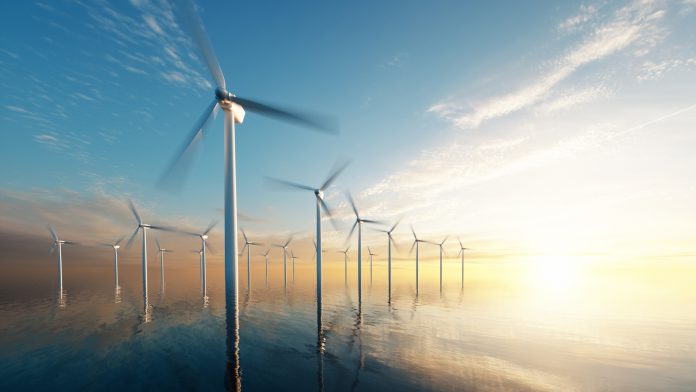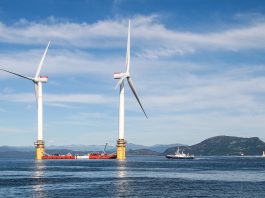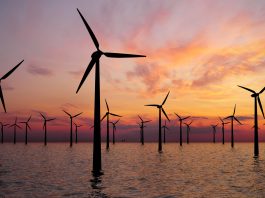Scientists from Cornell University have identified the most optimal strategy for boosting the efficiency of offshore wind farms, a considerable advancement toward transitioning to renewable energy sources.
The Cornell research team conducted a series of simulations to deduce where turbines should be situated in offshore wind farms to maximise their energy yields, an endeavour that may aid in designing future wind farm protocols in the US. This information comes at a pivotal time, as the U.S Department of the Interior recently unveiled White House plans to lease federal waters to several giant arrays of wind turbines across the country’s East Coast.
The research is published in the journal Joule.
Sara C. Pryor, professor of Earth and Atmospheric Sciences at Cornell University, said: “Massive upscaling of wind turbine deployments offshore is critical to achieving global and national goals to decarbonise the electricity supply.
“The excellent wind resource and proximity to large markets along the East Coast means it is the focus of America’s first-phase, offshore-wind projects, where thousands of physically larger and higher capacity wind turbines will be deployed over large areas (about 1.7 million acres of water, combined) at an unprecedented scale.”
US renewable energy ambitions
Deb Haaland, the secretary of the Department of the Interior, announced plans for leasing agreements of offshore winds farms earlier this month to satisfy the government’s goal to deploy 30 gigawatts of wind energy by 2030 – enough to power 90 million homes.
Currently, there are five offshore wind projects in active development in New York State alone, with the New York State Energy Research and Development Authority (NYSERDA) setting a goal of 9,000 megawatts by 2035. Their offshore wind farms are already achieving 4,399 megawatts, enough to power two million homes.
However, despite these ambitious plans for rapid wind energy expansion, squeezing every last drop on energy from these offshore renewables will be crucial to reducing dependence on environmentally harmful alternatives. This means that locating the offshore wind turbines in their prime position will be critical to achieving electricity-generation goals.
Optimising offshore wind farms
Low-turbulence conditions over water, in addition to locations and scale of the lease areas, mean that individual wind farms will experience each other’s wake – disturbed airflow – even if the offshore wind farms are situated between 15 to 50 miles apart. This can cause the turbines to fatigue earlier, and a group of turbines may experience up to 30% less power production due to wake effects. However, the researchers believe that their simulations can help design future deployments, ensuring the highest efficiency.
Across the globe, there is a trend of large wind turbines being positioned over large areas. For example, in Europe, offshore wind farms have increased in capacity from 321 to 621 megawatts between 2010 and 2019. A prime example is the Hornsea Project on the eastern coast of the UK, which includes a substantial amount of wind turbines that generate 1.2 gigawatts of electrical power.
However, despite wind energy success across the pond, the Cornell researchers explained that the US produces far below its potential. The nation currently requires over 4,146 terawatts of electricity each year; however, with the proper adjustments, they are confident that offshore wind projects can produce over 7,000 terawatts annually, potentially even exceeding demand. The team are now focusing on potential policy changes at the upcoming COP26.
“The proposed energy and infrastructure bill is on everyone’s mind,” Pryor said. “With the White House issuing commitments and briefing notes about offshore wind energy expansion and COP26 starting, decarbonising our electricity supply is a key component of meeting any climate change goals.”









